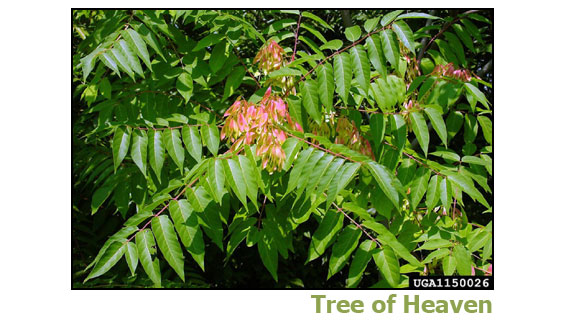Legislation to educate consumers on invasive plant species passed in the General Assembly, but not without debate over where signage would be placed.
Invasive plant species are not native to the region and can negatively impact ecosystems. The Virginia Department of Conservation and Recreation has identified 90 invasive plant species, by rank of most to least invasive. Species on the list include kudzu, English ivy, golden bamboo, periwinkle and barberry.
Sen. Saddam Salim, D-Fairfax, introduced Senate Bill 306 and Del. Holly Seibold, D-Fairfax, introduced House Bill 47. Lawmakers at the end of the legislative session smoothed out the differences between the bills and passed a final proposal.

Lawmakers were divided on whether the signage should be at each invasive plant display or at an entrance. The Senate amended both bills to place signage at entrances, but the House rejected the amendment. The original House bill also wanted language at each display that stated: plant with caution, could cause environmental harm and ask about alternatives.
The final bill passed will require any place that sells an invasive plant species to display a sign nearby that warns consumers and encourages them to ask about alternatives. There is a penalty of no more than $500 for retailers who fail to post the signs and a stop sale order until the signage is posted.
“We can’t stop invasive plants all 100% but making it aware to individuals who are purchasing is a step forward,” Salim said.
The commissioner of Agriculture and Consumer Services will determine the format, size and signage content by October. The signage will have a QR code that links to the Department of Conservation and Recreation’s invasive species list that is updated every four years.
The sign is expected to be black and yellow for optimal visibility, according to Salim.
Invasive species have cost Virginia as much as $1 billion annually, according to the Virginia Invasive Species website. This total exceeds $120 billion nationally.
Current state code prohibits state agencies from planting, selling or propagating any listed invasive plant, unless necessary for “scientific or educational purposes or bona fide agricultural purposes.”
Pat Calvert, director of clean water and land conservation at Virginia Conservation Network, supports labeling invasive plants. He sees the legislation as an opportunity to educate consumers. This also creates a responsibility for retailers to be transparent in what they are selling, Calvert said. He has dealt with pesky English ivy on his property, which, like other invasive plants, spreads quickly through seeding and roots. “It’s just really, really tough to get rid of,” Calvert said.
The plants can damage an ecosystem or agriculture. The Southeast Asian tree of heaven is a primary food source for the spotted lanternfly, which has expanded its territory, according to Calvert. The flies damage crops.
The management of these plants is problematic and costly for individuals, localities, parks and farmers, Calvert said.
Friends of the James River Park System in early March hosted Invasive Species Awareness Week. The program educated people on invasive plants through activities like plant removal, nature walks and more. The organization has hosted this awareness event since 2015.
The James River Park System has over 50 invasive plant species that threaten trees, water and soil quality, and also native bugs, birds and flowers, the organization stated.
Lawmakers recently approved a budget that distributes several million dollars across departments to help meet initiatives outlined by the Virginia Invasive Species Management Plan, and which includes the hiring of new employees.
The governor is currently reviewing the budget and legislation. The General Assembly will reconvene on April 17 to consider any of his proposed changes.


